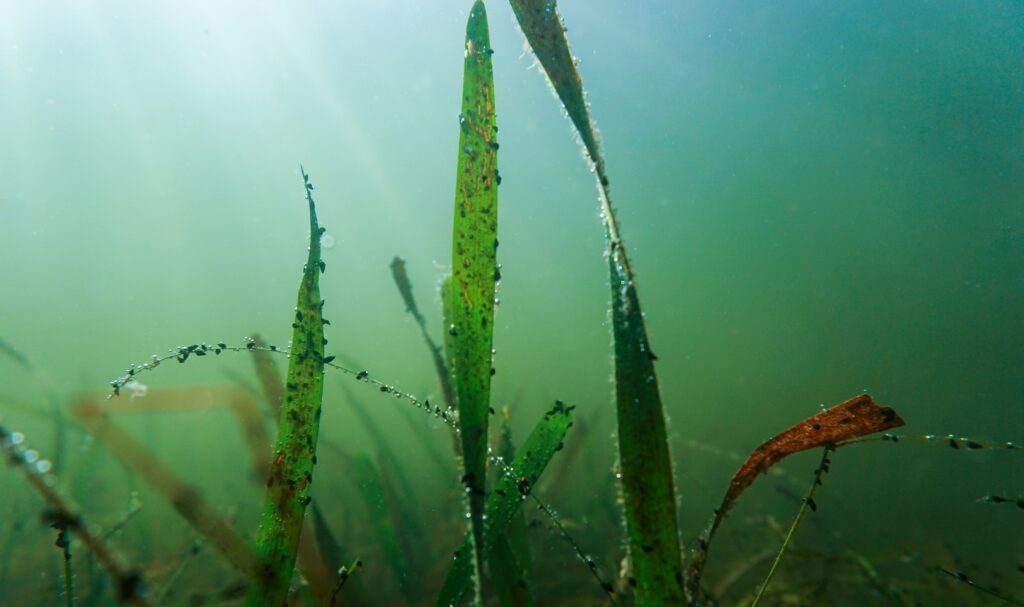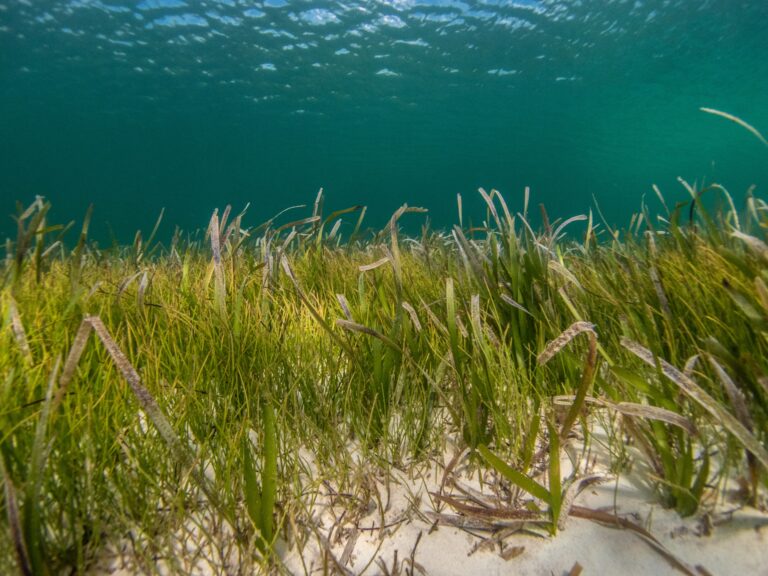Seagrasses, often overlooked but incredibly vital components of marine ecosystems, play a crucial role in maintaining the health and balance of coastal environments worldwide. Despite their significance, seagrasses face numerous threats, including coastal development, pollution, and climate change. In this blog post, we will explore the importance of seagrasses, their unique characteristics, and the challenges they face, emphasizing why their conservation is essential for the health of our oceans.
Understanding Seagrasses
Definition and Characteristics of Seagrasses
Seagrasses are flowering plants that have adapted to live in marine environments. They form underwater meadows in shallow coastal waters, where they play crucial ecological roles. Unlike seaweeds (macroalgae), seagrasses have true roots, stems, and leaves. These plants produce flowers and seeds for reproduction. Seagrasses are typically found in soft sediments like sand or mud, anchoring themselves firmly with their root systems. One of the key characteristics of seagrasses is their ability to tolerate high salinity levels, fluctuating water levels, and strong wave action.
Distribution and Diversity Across the Globe
Seagrasses are distributed worldwide, inhabiting coastal regions in both tropical and temperate climates. They are most commonly found in sheltered bays, lagoons, and estuaries where light penetration is sufficient for photosynthesis. However, some species can also thrive in deeper waters. The diversity of seagrasses varies across regions, with approximately 60 known species belonging to four main families: Posidoniaceae, Zosteraceae, Hydrocharitaceae, and Cymodoceaceae. While tropical regions host the highest diversity of seagrass species, temperate areas also support significant populations.
Adaptations to Marine Environments
Seagrasses have evolved numerous adaptations to thrive in their marine habitats. One crucial adaptation is their ability to extract nutrients from the sediment efficiently. Seagrasses possess specialized root systems that facilitate nutrient uptake and provide stability in loose substrates. Additionally, they have developed mechanisms to cope with high levels of salt in their environment, such as excreting excess salt through their leaves or accumulating it in specialized cells. Seagrasses also employ various reproductive strategies, including both sexual reproduction via flowers and seeds and asexual reproduction through rhizome growth. These adaptations enable seagrasses to persist in dynamic and challenging marine ecosystems, contributing significantly to coastal biodiversity and ecosystem health.

Ecological Importance of Seagrasses
Habitat and Nursery Grounds for Marine Life
Seagrasses provide vital habitat and nursery grounds for a diverse array of marine life. Their dense underwater meadows offer shelter, food, and breeding sites for various organisms, including fish, crustaceans, mollusks, and invertebrates. Juvenile fish and other marine species often seek refuge among seagrass beds, benefiting from the protection they provide against predators. Additionally, seagrass habitats support a complex food web, where smaller organisms feed on detritus and algae while larger predators prey on them, contributing to overall marine biodiversity and ecosystem stability.
Biodiversity Hotspots
Seagrass ecosystems are recognized as biodiversity hotspots, hosting a remarkable diversity of flora and fauna. These underwater meadows support a wide range of species, from tiny microorganisms to larger vertebrates. Many commercially important fish species rely on seagrass habitats during their life cycles, making these areas critical for fisheries and maintaining fish populations. Furthermore, seagrass beds serve as feeding grounds for migratory birds and sea turtles, enhancing the ecological connectivity between terrestrial and marine environments. The intricate structure of seagrass habitats creates niches for numerous species, fostering rich biodiversity and ecological resilience.
Carbon Storage and Climate Regulation
Seagrasses play a significant role in carbon storage and climate regulation, helping mitigate the impacts of climate change. These plants absorb and store large amounts of carbon dioxide (CO2) from the atmosphere through photosynthesis. The organic carbon produced by seagrasses is then sequestered in the sediments below, contributing to long-term carbon storage. Additionally, seagrass meadows act as buffers against coastal erosion and storm surges, reducing the vulnerability of coastal communities to extreme weather events. By capturing carbon and stabilizing coastal areas, seagrasses contribute to climate change mitigation and adaptation efforts, highlighting their importance in global ecosystem management strategies.



